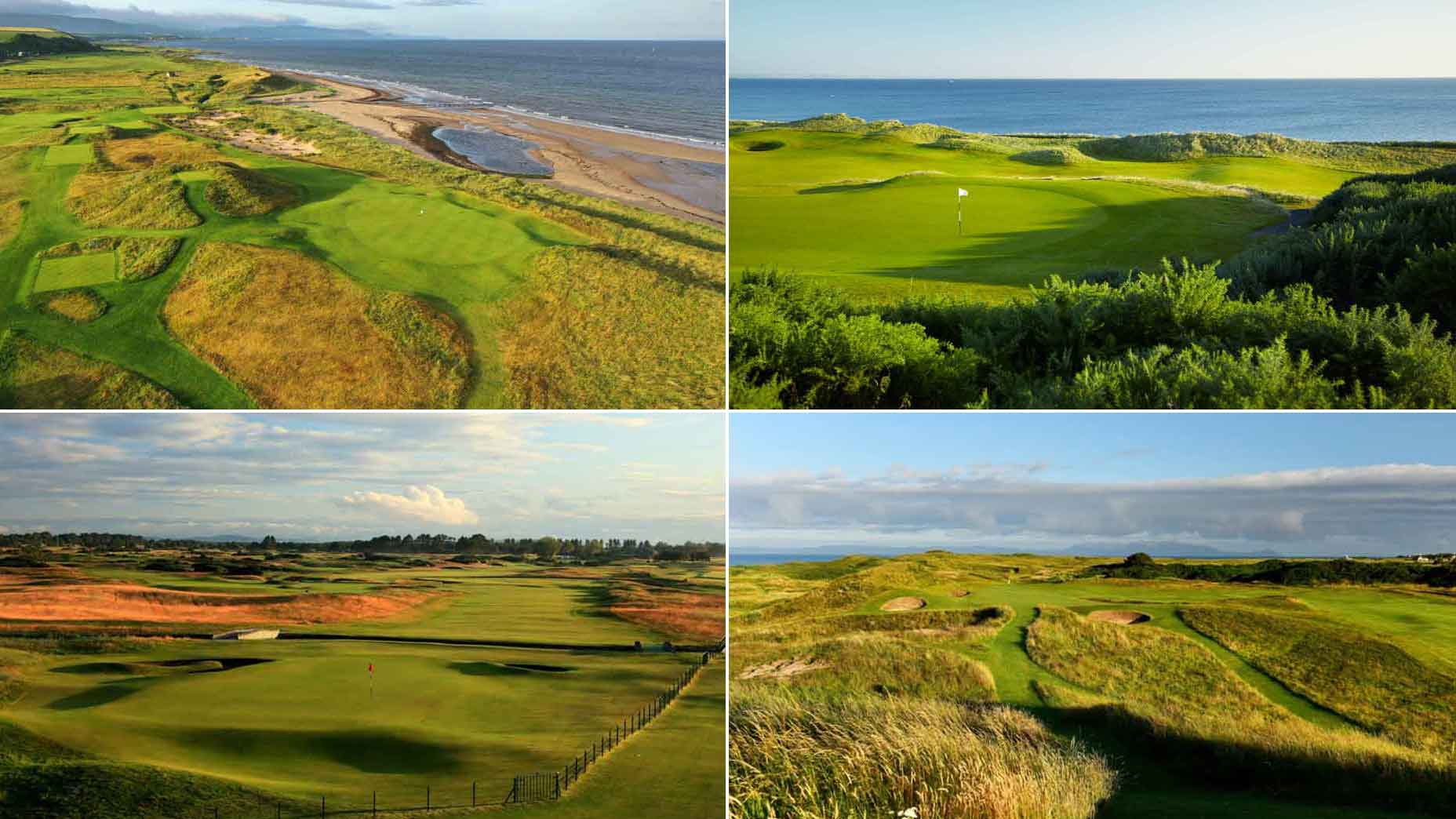
Scotland’s Sacred Greens: An In-Depth Exploration of its Best Golf Courses
Scotland. The very name evokes images of ancient castles, rolling hills, the haunting skirl of bagpipes, and, for any true enthusiast, the sacred turf where golf was born. This small, majestic country is not just a destination for golfers; it is a pilgrimage. It’s where the game evolved from a humble pastime into the global sport we know and love today, and its courses are steeped in centuries of history, tradition, and unparalleled challenge.
From the windswept links along its dramatic coastlines to the majestic inland layouts nestled amidst breathtaking scenery, Scotland offers an unrivaled golf experience. More than just a game, playing golf here is a journey into the heart and soul of the sport, a chance to walk in the footsteps of legends, and to test your mettle against the elements on some of the world’s most iconic layouts.
This article delves deep into the very best golf courses Scotland has to offer, guiding you through the must-play destinations that define a truly unforgettable Scottish golf adventure.
The Unquestionable Epicenter: St. Andrews Links (Fife)
No discussion of Scottish golf can begin anywhere other than St. Andrews, the "Home of Golf." It’s more than just a course; it’s a living museum, a spiritual home for golfers worldwide.
The Old Course: This is the most famous golf course on Earth, a place of pilgrimage for every golfer. Its hallowed grounds have hosted The Open Championship a record 30 times, bearing witness to countless moments of triumph and despair. Walking its fairways is to connect with centuries of golf history. Key features like the notorious Road Hole (17th), with its road bunker and stone wall, the vast Hell Bunker on the 14th, and the iconic Swilcan Bridge on the 18th are etched into golfing folklore. The course’s strategic bunkering, immense double greens, and the ever-present wind demand thought, precision, and a touch of luck. Playing the Old Course is not merely a round of golf; it’s an experience that transcends the game itself. Securing a tee time often requires entering a ballot (lottery) 48 hours in advance, a testament to its enduring popularity.
Beyond the Old: While the Old Course rightly steals the spotlight, St. Andrews Links comprises six other fantastic courses, each offering a distinct challenge:
- The New Course: Often considered a sterner test than the Old by locals, the New Course (opened in 1895) is a classic links layout with challenging greens and strategic bunkering.
- The Jubilee Course: Originally for ladies and beginners, the Jubilee has evolved into a formidable championship course, playing directly alongside the sea and often bearing the brunt of the coastal winds.
- The Castle Course: The newest addition, perched on a dramatic clifftop, offers breathtaking views and a modern links challenge.
- Eden, Strathtyrum, and Balgove: These offer more accessible, yet still enjoyable, rounds for golfers of all abilities.
A visit to St. Andrews is incomplete without exploring the town itself, soaking in its academic charm, ancient architecture, and vibrant golf culture.
The Legends of The Open Championship: East Coast & West Coast Icons
Beyond St. Andrews, Scotland boasts a collection of Open Championship venues that are equally formidable and iconic, each with its own unique character.
Carnoustie Golf Links (Angus): The Beast of Barry
Known affectionately (or perhaps fearfully) as "Car-nasty," Carnoustie is widely regarded as the toughest Open Championship course. Located on the east coast, its flat, seemingly innocuous appearance belies a truly brutal test of golf. The course’s legendary difficulty stems from its deep, strategically placed bunkers, narrow fairways, and the ever-present threat of the meandering Barry Burn, which comes into play on several crucial holes, most famously the final three. The 18th hole, "Home," has decided many an Open, demanding precision to avoid the burn and the notorious Spectacles bunkers. Carnoustie demands mental fortitude, accurate ball-striking, and a healthy respect for its formidable challenges. It’s a course where pars feel like birdies.
Muirfield (East Lothian): The Honourable Company’s Strategic Gem
Home to The Honourable Company of Edinburgh Golfers, Muirfield is a private club with a storied history, having hosted The Open 16 times. It’s unique among links courses for its unusual layout: the front nine plays in a clockwise direction around the perimeter, while the back nine plays counter-clockwise inside the front nine. This design ensures that the wind, a constant factor on the links, comes from a different direction on almost every hole, demanding exceptional versatility and strategic thinking. Muirfield is meticulously maintained, with fast, firm greens and a pristine presentation. It’s a course that rewards intelligence and precision over brute force, offering a true intellectual challenge to the accomplished golfer. The club’s traditional lunch, often served in jackets and ties, is as much a part of the Muirfield experience as the golf itself.
Royal Troon Golf Club (Ayrshire): The Iconic Postage Stamp
Situated on Scotland’s rugged west coast, Royal Troon is a classic links course known for its distinct front and back nines. The outward nine generally plays with the prevailing wind, offering scoring opportunities, while the inward nine, often into the wind, presents a stern test. It’s home to one of golf’s most famous par-3s, the 8th hole, "The Postage Stamp." At a mere 123 yards, it’s the shortest hole in Open Championship golf, yet its tiny green, surrounded by five treacherous bunkers, has claimed countless victims. Troon also features the longest hole in Open golf, the par-5 6th, "Turnberry," adding to its diverse challenge. The course’s close proximity to the railway line and its views across to the Isle of Arran add to its unique charm.
Trump Turnberry, Ailsa Course (Ayrshire): Coastal Grandeur
Perched dramatically on the Ayrshire coast with the iconic Ailsa Craig lighthouse providing a stunning backdrop, Turnberry’s Ailsa Course is breathtakingly beautiful and equally challenging. Re-designed significantly in recent years, it now boasts several holes that play directly along the cliff edge, offering unparalleled views of the Firth of Clyde and the dramatic coastline. It’s the site of the legendary "Duel in the Sun" between Tom Watson and Jack Nicklaus in the 1977 Open. The course is characterized by its rolling linksland, strategic bunkering, and greens that often feature subtle but severe undulations. Playing here feels like stepping onto a Hollywood set, a truly grand and memorable golf experience.
Northern Majesty & Quintessential Links: Beyond the Open Rota
While the Open Championship venues are essential, Scotland offers a wealth of other world-class courses that are equally deserving of your attention.
Royal Dornoch Golf Club (Highlands): Pure Links Perfection
Journey north to the Highlands, and you’ll discover Royal Dornoch, a remote masterpiece consistently ranked among the world’s best. This is pure, unadulterated links golf in its most natural form. The course flows seamlessly over natural dunes, with raised greens often perched on plateaus, demanding precise approach shots. The gorse and heather are ever-present threats, adding to the challenge and the wild beauty. Dornoch’s isolation adds to its allure; it feels like a spiritual home for golf, untouched by the commercialism found elsewhere. It was Donald Ross’s home course, and his influence is palpable. Playing Dornoch is a serene, almost meditative experience, a true communion with the game and nature.
North Berwick Golf Club (East Lothian): The Quintessential Links Experience
Often described as the most "fun" links course in Scotland, North Berwick is a joyous romp over classic, quirky linksland. It’s famous for its unique features, including walls crossing fairways (most notably on the 13th, "Pit"), the original "Redan" green design (the 15th), and the challenging par-3 16th, "Gate," which requires a blind shot over a stone wall. The views of the Firth of Forth, Bass Rock, and Craigleith Island are spectacular. North Berwick offers a delightful contrast to the stern challenges of its Open-hosting neighbours; it’s a course that makes you smile, showcasing the pure enjoyment of traditional links golf.
Inland Elegance: A Different Flavor of Scottish Golf
While links golf is Scotland’s signature, its inland courses offer a different, equally compelling, experience.
Gleneagles (Perthshire): The Grand Dame of Inland Golf
Nestled in the breathtaking Perthshire countryside, Gleneagles is a luxurious resort boasting three championship courses.
- The PGA Centenary Course: Designed by Jack Nicklaus, this course hosted the 2014 Ryder Cup and is a modern parkland layout designed for championship play, offering wide fairways and strategic bunkering.
- The King’s Course: A classic James Braid design from 1919, the King’s is renowned for its strategic design, challenging elevation changes, and magnificent views. It demands precision and course management.
- The Queen’s Course: Shorter and more intimate, the Queen’s is a delightful heathland-style course that winds through pine and birch trees, offering a charming and enjoyable round.
Gleneagles provides a sublime experience of luxury golf, combining world-class courses with opulent accommodation and service.
The Wild West & Remote Wonders: For the Adventurous Golfer
For those seeking truly remote and untamed golf experiences, Scotland’s far-flung corners deliver.
Machrihanish Golf Club (Kintyre Peninsula): The First Tee Shot Over the Atlantic
Located on the remote Kintyre Peninsula, Machrihanish offers one of the most exhilarating opening tee shots in golf – a drive directly over the Atlantic Ocean. This classic Old Tom Morris links is a rugged, natural beauty, largely untouched by modern machinery. The course flows organically over the dunes, offering spectacular views and a true sense of isolation. The greens are notoriously tricky, and the wind is almost always a factor. Nearby, the newer Machrihanish Dunes offers an even wilder, more natural links experience, with minimal earth movement, allowing nature to dictate the holes.
Planning Your Scottish Golf Pilgrimage: Essential Tips
Embarking on a Scottish golf trip requires careful planning to maximize your experience:
- Book Well in Advance: Especially for the Old Course (ballot entry is crucial), Muirfield, and Turnberry. Many courses book up a year or more out.
- Seasonality: The prime golf season is from May to September, offering longer daylight hours and generally milder (though still unpredictable) weather.
- Embrace the Weather: Scottish weather is famously changeable. Pack layers, waterproofs (jacket and trousers), and a sturdy umbrella. Sunscreen is also a must!
- Caddies are Highly Recommended: Especially on the links courses, a local caddie’s knowledge of lines, undulations, and local lore is invaluable and enhances the experience significantly.
- Transportation: A rental car offers the most flexibility to explore different regions. Distances can be deceptive due to winding roads.
- Accommodation: Book early, especially in popular golfing towns like St. Andrews and North Berwick.
- Beyond Golf: Don’t forget to immerse yourself in Scottish culture – explore castles, sample whisky, enjoy traditional food, and take in the stunning scenery.
Conclusion: More Than Just a Game
Scotland’s golf courses offer more than just 18 holes; they offer an odyssey. Each course tells a story, whispers tales of champions and humble beginnings, and challenges you not just physically, but mentally and emotionally. From the ancient, revered links of St. Andrews to the wild, windswept beauty of the Highlands, from the stern test of Carnoustie to the elegant luxury of Gleneagles, the diversity and quality are unparalleled.
To play golf in Scotland is to connect with the very essence of the game. It’s an experience that transcends scores and handicaps, leaving you with memories that will last a lifetime. So pack your clubs, prepare for the elements, and embark on the ultimate golf pilgrimage. The sacred greens of Scotland await.



